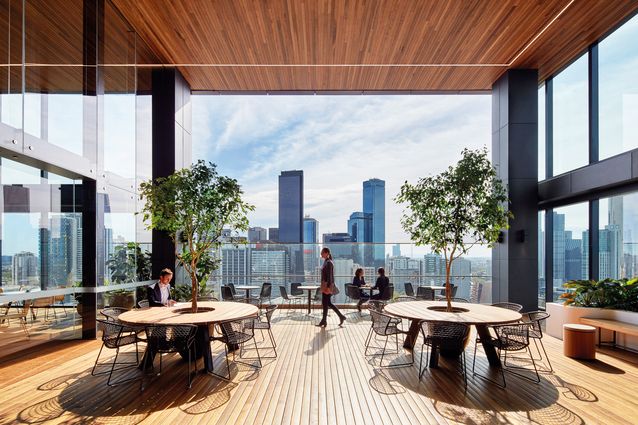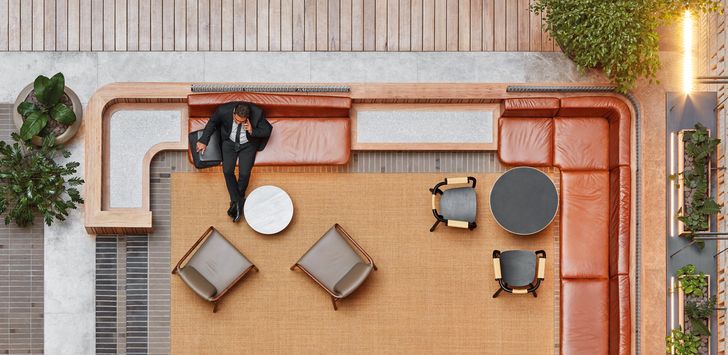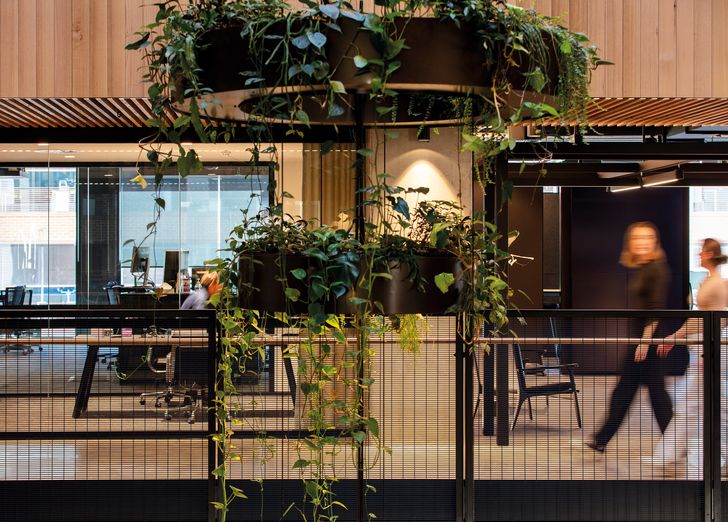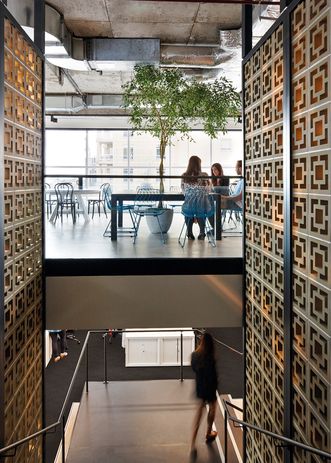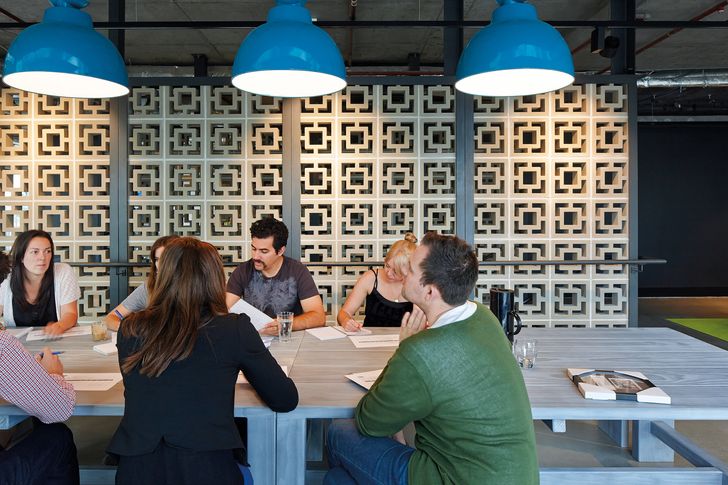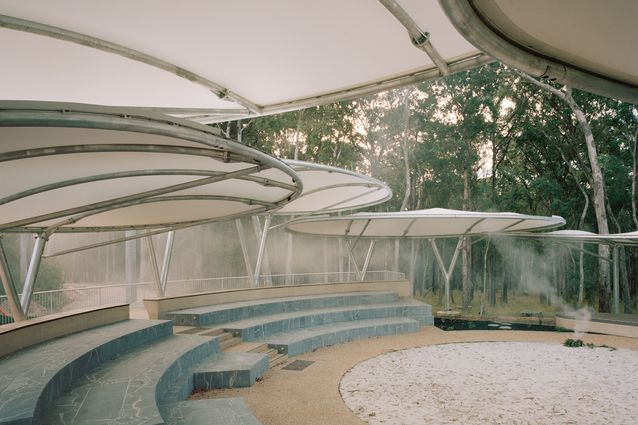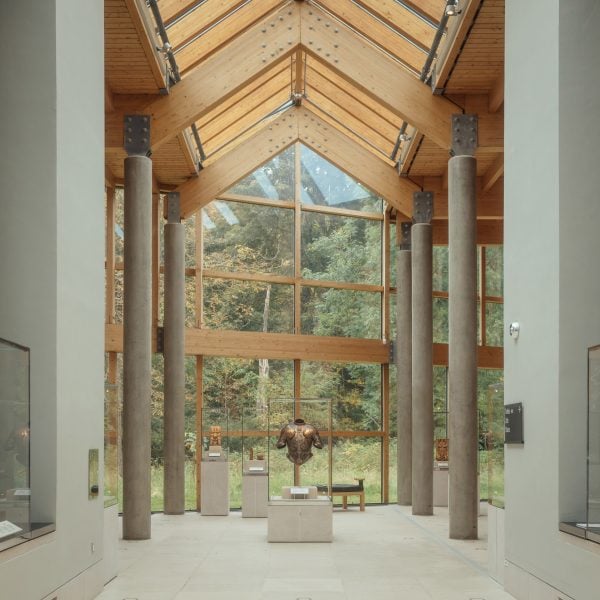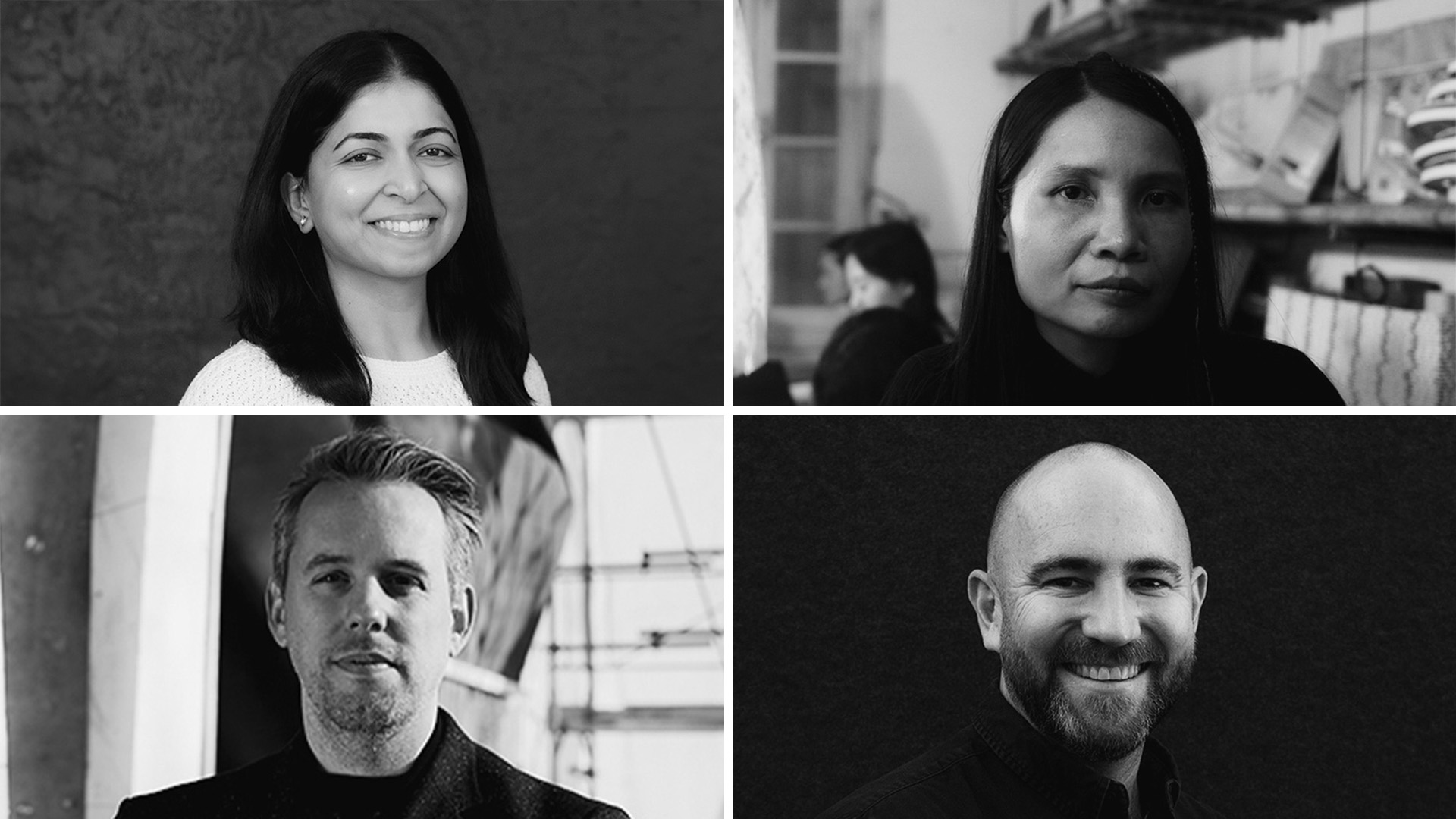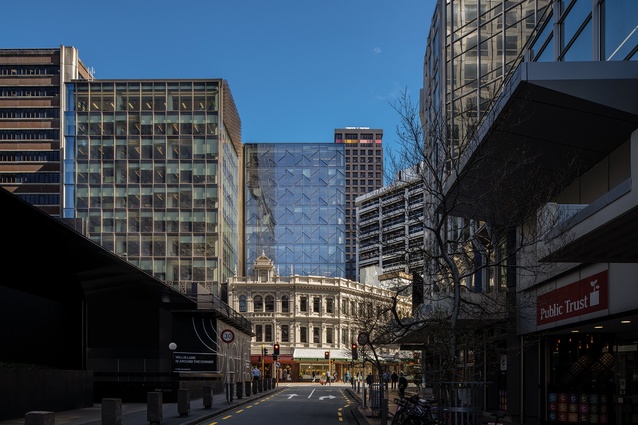The COVID-19 pandemic has resulted in the loss of more than a million lives globally, shifted the white-collar world to remote working and students to remote learning, and triggered the worst peacetime recession in 100 years.1
History reveals that societal crises have the power to instigate major changes. World War II drew women into the workforce out of necessity. After the war, the shift persisted, accelerating women’s participation in the workforce. The 9/11 terrorist attacks reshaped attitudes to surveillance and personal privacy and during the 2003 SARS outbreak in China, people were afraid to leave the house, triggering a rise in e-commerce that paved the way for digital giants such as Alibaba.2
Architecture has been similarly impacted. Material shortages during World War II drove innovation in building technology, advancing the modernist movement as cities were rebuilt in the aftermath. Perhaps more pertinent, modernist architecture can also be understood as a consequence of the fear of disease. Tuberculosis was one of the most pressing health concerns of the early twentieth century. Dark rooms and dusty corners where bacteria lurk were replaced with expansive windows and terraces. Finnish architect Alvar Aalto described the purpose of his Paimio Sanatorium “to function as a medical instrument.”3
While we cannot be certain what the future holds, here we re-imagine a future five years on that has been positively impacted by the disruption of COVID-19.
At 161 Collins Street, Melbourne the heart of the building is the new atrium, which has been transformed into a casual tenant-focused working lounge.
Image:
Peter Clarke
Healthy and Sustainable
Over the course of 2020’s prolonged restrictions, mental health declined significantly. Only 45 percent of people described their mindset as positive and only 32 percent felt their ability to separate life and work was as effective while working remotely, compared to before the pandemic.4
Wellbeing conversations are now on the table and wellbeing has become a measure of organizational performance. Indeed, organizations that prioritize their people have fared best through the COVID-19 pandemic. They have attracted and retained the best talent and are achieving competitive advantage from the creativity, empathy and problem-solving ability of their future-ready workforce.
Designers have adopted the World Health Organization’s Manifesto for a healthy and green recovery from COVID-19, launched during the peak of the pandemic.5 Design has responded by meaningfully integrating initiatives that will benefit the physical, cognitive, emotional and social wellbeing of the workforce, together with environmentally sustainable design initiatives.
New policies now mandate minimum wellbeing standards and building owners and organizations are incentivized to reach exemplar standards, which as a preventive health measure, will offset substantial costs to the community to treat the unwell.6
Outdoor and naturally ventilated spaces have become the norm. Sophis-ticated building systems enable flexibility to switch between maximum fresh air to minimum fresh air (when pollution levels are high, such as during the bushfires) to provide the healthiest mechanically ventilated indoor spaces. Significant areas of planting are now mandated for each building to improve biodiversity and air quality in our cities – green roofs, terraces, pocket parks and indoor biophilia will be prevalent – greening our buildings and our cities. Slender floorplates prevail as C-grade space (deeper than 12 metres from perimeter glazing) is eradicated, giving occupants optimal access to natural light and connection to views and changing light as the day unfolds.
At Publicis Groupe in Sydney, the fitout includes mixed-mode winter gardens and a central atrium and stairs connecting staff.
Image:
Brett Boardman
Community
The loneliness epidemic that impacted a devastatingly high number of people pre-COVID-19 ballooned out of proportion during the social isolation of the pandemic.7 While working remotely, only 30 percent of people felt as well connected to their colleagues by late 2020 as they did before the pandemic – a 19 percent reduction since the initial pivot to remote working in early 2020.8 With our brains wired for social connection, scientific studies show the importance of workplaces (on both a tenancy and building scale) to connect people and form communities, as well as the productivity benefits of happy workers (+12 percent increase in productivity).9 Leveraging Denmark’s enviable top position in a global workforce happiness index, the Danish model of a fixed lunchtime has been adopted.10 Organizations provide lunch for their people each day to enable relationships to form, personal and professional networks to grow and cross-business teams to flourish, driving innovation in problem finding and solving.
The breakout area has been redefined as a “social piazza” and has increased in size and importance, now recognized as the space that yields the highest value for an organization. Third Spaces have followed suit and have been redefined as places to unite building communities – particularly important to supplement compact tenancies in small footprint buildings. These highly flexible spaces are programmed for ideation, knowledge sharing, project work, yoga and mindfulness and occupy the best space available. Community concierge teams manage space and time on an organizational and building level, to maximize social networks and ensure space is constantly recalibrated to maximize usage.
The Melbourne workplace for creative agency CHE Proximity is textured and personable, encouraging staff to interact and share ideas.
Image:
Peter Bennetts
New metrics – collaboration and creativity
The most challenging behaviours for remote workers during the pandemic were those aspects of work requiring face-to-face interaction. The longer we worked remotely, the more we struggled. By November 2020 only 43 percent of people felt they could collaborate as effectively and only 39 percent felt they were as effective with tasks requiring a high degree of creativity.11
In a world where people can work remotely, the workplace has been redefined by new metrics beyond the pre-pandemic “bums-on-seats” measure of efficiency. With the shortcomings of virtual collaboration, the workplace has been recast as a rally point. It’s an ideas factory of sorts, a place where people come together to collaborate, ideate and learn.
We now recognize that going to the office gives us the full benefit of face-to-face working, inspired by each other’s words, body language and energy to create new and innovative solutions to strategic challenges, and to learn from others. Process and focus work is left for home.
Workspaces are now designed to purposefully drive greater collaboration. Re-scaling of work areas to a more intimate, human scale has overcome the lack of activation, energy and engagement of the partially occupied workplace we experienced when many firms first returned to work. Collaborative project team neighbourhoods dominate, clustered around highly trafficked circulation routes to energize in-office teams and overseen by a building concierge to maximize benefit and ensure space works hard.
Fewer buffered individual working areas exist on the basis that individual and concentrated work is prioritized for home. High- and low-tech display has become increasingly important to drive knowledge sharing across the business when staff are present in the workplace, realizing new and better innovations faster.
CHE Proximity’s Melbourne office is broken down into distinct neighbourhoods with a feel and identity that gently modulates between key team zones.
Image:
Peter Bennetts
Social identity
The importance of the office as a symbol of an organization’s values and brand has grown dramatically with the rise in activism amongst the youngest generations of the workforce.12 We understand that there is a correlation between an individual’s “social identity,” their values and the causes they subscribe to, and an increased sense of purpose and belonging when they work for a company that shares the same values.
Workplaces and commercial buildings that wear their values on their sleeve, demonstrating positive social and environmental impact, have a competitive advantage. They have become powerful tools to attract the best talent, as well as being a magnet to draw staff to the physical office when they have the choice to work remotely. This manifests in more inclusive workplaces where gender neutral toilets are the norm for a gender diverse workforce and universal accessible design is a minimum standard to accommodate the needs of an age and physically diverse workforce. Preference is given to local materials and manufacturers, ethical consumerism, social enterprise baristas and green collar workers; and sustainability is integrated, visible and celebrated.
At the ASX Australian Liquidity Centre in Sydney, a sun-drenched internal verandah stretching the length of the workplace signifies to the teams a change in pace from the busy digital hub.
Image:
Trevor Mein
Do nothing
Of course, there are some who choose not to change anything in response to the pandemic and who have returned to pre-pandemic business as usual. History shows us that in some cases this may be the right decision.
In 1943, in reference to the controversial debate about the rebuilding of the British House of Commons, which had been pretty much blown to bits during World War II, Winston Churchill uttered the famous words, “We shape our buildings; thereafter they shape us.”
Opposed to the progressive views of those who wanted to modernize and improve the design, Churchill dug his heels in and replicated the old design for the following reasons:
– Rather than replicate the egalitarian semi-circle room shape of the US House of Representatives, he insisted on the original rectangular shape, so opposing parties sat facing each other in a confrontational setting, because this had shaped their much-admired two-party democratic system of government.
– Rather than expand the Chamber to make it more comfortable for the 646 Parliament members, Churchill stuck with the original 427 seats, creating a crowded environment with a sense of urgency and intimacy, as members spilled out into the aisles. As he put it, “Giving each member a desk to sit at and a lid to bang” would leave the space empty and dead most of the time.
Churchill wanted to not only recreate the building, but also recreate inside it the movements, the feelings, the style of communication that had seen it endure and overcome massive struggles over centuries.
He wanted this important space to preserve and protect the character-istically rambunctious nature of British parliamentary debate. And that had much to do with the original design.13
In conclusion, whether we choose to radically evolve the design of our workplaces and buildings or do nothing, making informed, intentional decisions about how design can drive performance and culture forward is crucial.
As we develop new metrics and recalibrate how we measure value in the new world, an average building or workplace will be overlooked in favour of its high-performing competitor. Organizations that downsize their tenancies will want higher returns from smaller footprints. In preparation for the next major disruption, forward thinkers will prioritize unforeseen levels of flexibility in the design of tenancies and buildings. Buildings, like brands, will become symbolic of the values and ambitions of a generation aligned to positive social and environmental impact.

